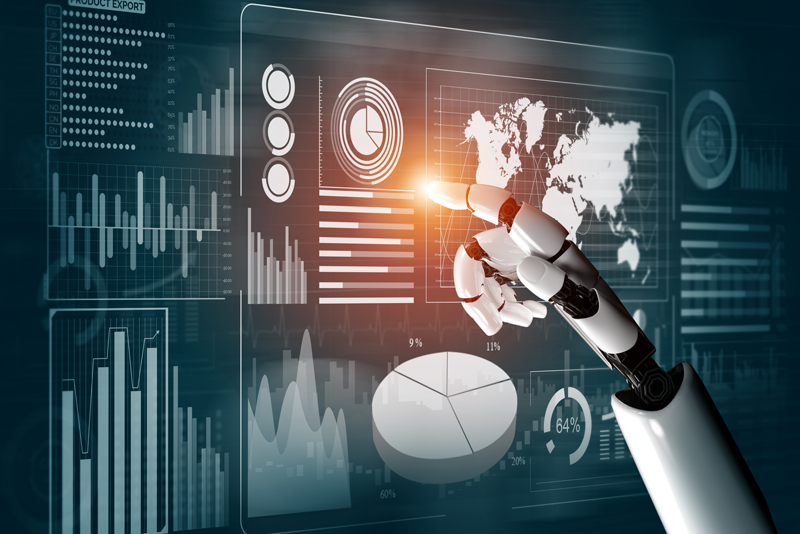
The integration of artificial intelligence and edge computing has brought revolutionary changes to many industries. Among them, rapid innovation in model quantification plays a key role. Model quantization is a technique that speeds up calculations by improving portability and reducing model size
The rewritten content is: The computing power of edge devices is limited and cannot meet the needs of deploying high-precision models. Therefore, model quantization technology is introduced to bridge this gap to achieve faster, more efficient, and more cost-effective edge AI solutions. Breakthrough technologies such as Generalized Post-Training Quantization (GPTQ), Low-Rank Adaptation (LoRA), and Quantitative Low-Rank Adaptation (QLoRA) promise to facilitate analysis and decision-making as real-time data is generated
By combining edge AI with appropriate Combining the tools and technologies, we can redefine the way we interact with data and data-driven applications

Edge artificial intelligence The goal is to push data processing and models closer to where the data is generated, such as remote servers, tablets, IoT devices, or smartphones. This enables low-latency, real-time artificial intelligence. It is expected that by 2025, more than half of deep neural network data analysis will be performed at the edge. This paradigm shift will bring multiple benefits:
For example, manufacturers can apply edge AI technology to their processes for predictive maintenance, quality control, and defect detection. By running artificial intelligence on smart machines and sensors and analyzing the data locally, manufacturers can better leverage real-time data, reduce downtime, and improve production processes and efficiency
For edge AI to work, AI models need to optimize performance without compromising accuracy. As AI models become more complex and larger, they become more difficult to process. This brings challenges to deploying artificial intelligence models at the edge, because edge devices often have limited resources and limitations in their ability to support such models
The numerical accuracy of model parameters can be reduced through model quantization, for example, from 32-bit to 32-bit. Floating point numbers are reduced to 8-bit integers, making the model more lightweight and suitable for deployment on resource-constrained devices such as mobile phones, edge devices, and embedded systems
GPTQ, LoRA and QLoRA Technology has become a potential game changer in the field of model quantification. Three technologies, GPTQ, LoRA and QLoRA, have emerged as potential game-changers in the field of model quantization
Choosing from these methods depends largely on the unique needs of the project, whether the project is in the fine-tuning phase or the deployment phase, and whether you have computing resources at your disposal. By using these quantitative techniques, developers can effectively bring AI to the edge, striking the balance between performance and efficiency that is critical for a wide range of applications
The applications of edge artificial intelligence are very wide. From smart cameras that process images of rail car inspections at train stations, to wearable health devices that detect abnormalities in the wearer’s vital signs, to smart sensors that monitor inventory on retailers’ shelves, the possibilities are endless. As a result, IDC predicts that edge computing spending will reach $317 billion in 2028, and the edge is redefining the way organizations process data demand will grow rapidly. Such a platform could facilitate local data processing while delivering all the benefits of edge AI, including reduced latency and enhanced data privacy
To facilitate the rapid development of edge AI, a persistent data layer is critical for local and cloud-based data management, distribution, and processing. With the emergence of multimodal AI models, a unified platform capable of processing different types of data becomes critical to meet the operational needs of edge computing. Having a unified data platform enables AI models to seamlessly access and interact with local data stores in both online and offline environments. In addition, distributed inference is also expected to solve current data privacy and compliance issues
As we move towards intelligent edge devices, the convergence of artificial intelligence, edge computing and edge database management will be the precursor to fast, real-time and The heart of the age of security solutions. Going forward, organizations can focus on implementing sophisticated edge policies to efficiently and securely manage AI workloads and simplify the use of data in the business
The above is the detailed content of Definition of interaction methods: interaction between model quantification and edge artificial intelligence. For more information, please follow other related articles on the PHP Chinese website!
 Application of artificial intelligence in life
Application of artificial intelligence in life
 What is the basic concept of artificial intelligence
What is the basic concept of artificial intelligence
 ones function usage
ones function usage
 Is OuYi Exchange legal?
Is OuYi Exchange legal?
 Virtual mobile phone number to receive verification code
Virtual mobile phone number to receive verification code
 How to open php in a web page
How to open php in a web page
 linux view ip command
linux view ip command
 What is the difference between 4g and 5g mobile phones?
What is the difference between 4g and 5g mobile phones?




